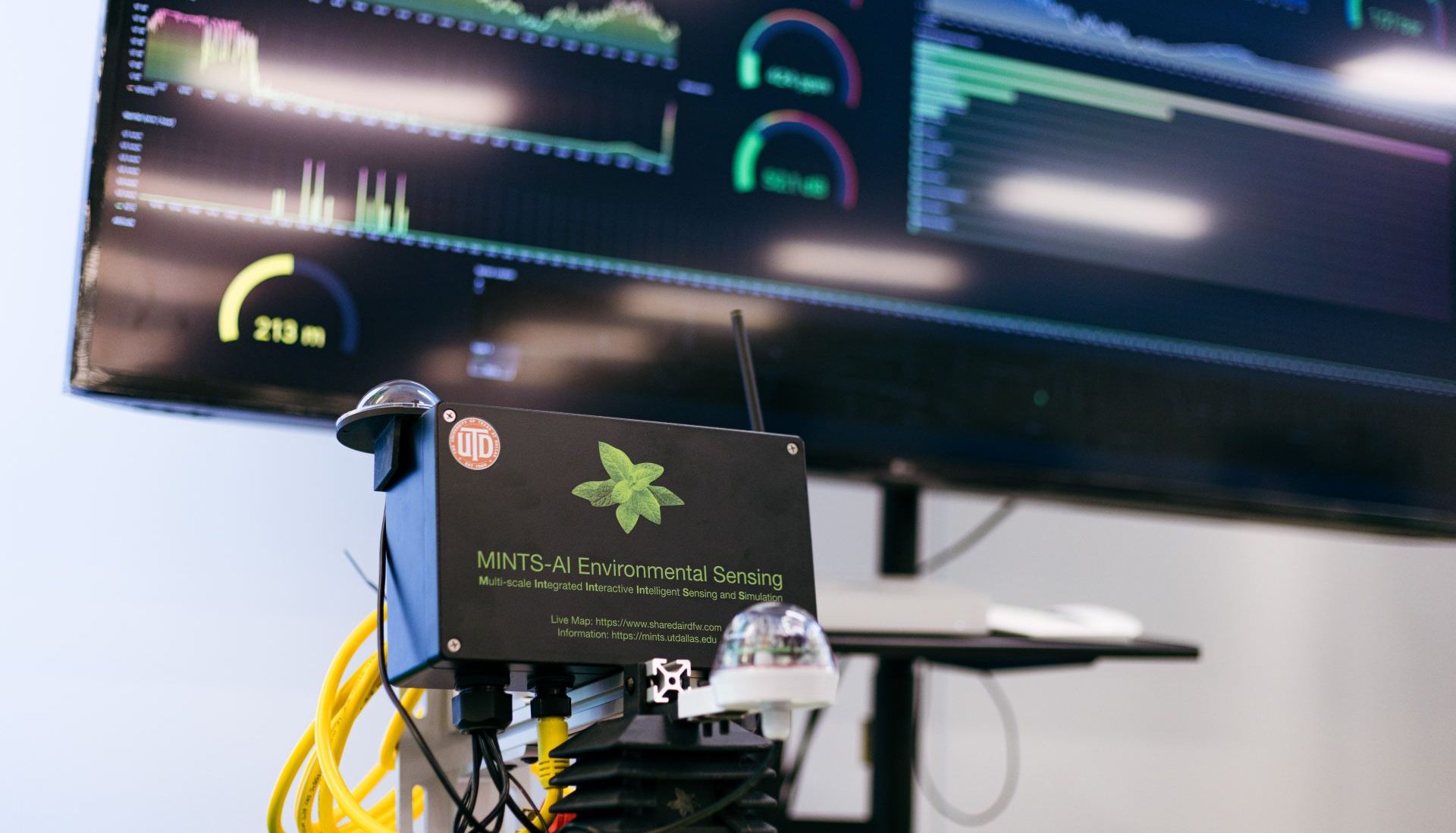
Air pollution lingers as a mostly invisible threat, silently weaving its way into our lives and negatively impacting our health. But what if we could actually see the composition of the air we breathe?
A team of University of Texas at Dallas researchers, led by physics professor Dr. David Lary, recently installed several small sensors to various buildings and parking structures across campus. The sensors measure local air composition in real-time and send data to online dashboards.
Lary is the founding director of the Multi-Scale Integrated Intelligent Interactive Sensing (MINTS) Center, which uses machine learning to develop and implement remote sensing to address environmental challenges and their impact on society’s health.
The World Health Organization estimates that around 7 million people die every year from exposure to fine particles in polluted air, which causes diseases including stroke, heart disease, lung cancer, pneumonia and even birth defects.
“The passion of my lab is to keep people out of harm’s way by holistically measuring the environment,” Lary said. “After the pandemic, it’s become imprinted on all of our consciousness that even the tiniest airborne particles can have a big, and sometimes fatal, impact on us.”
The new on-campus network consists of nine sensors that analyze and measure the volume of fine particulate matter, carbon dioxide levels, temperature, pressure and humidity. They can even identify bird species by their unique calls.
Each location will ultimately include a QR code to the sensor’s dashboard, so the campus community can easily access the live data on an online map.
A particle in the air needs to be 10 microns or smaller before it can be inhaled into your respiratory tract — these are classified as fine particles. Monitoring the size of the particles, even without identifying what the particle is, is an especially important parameter, according to Lary.
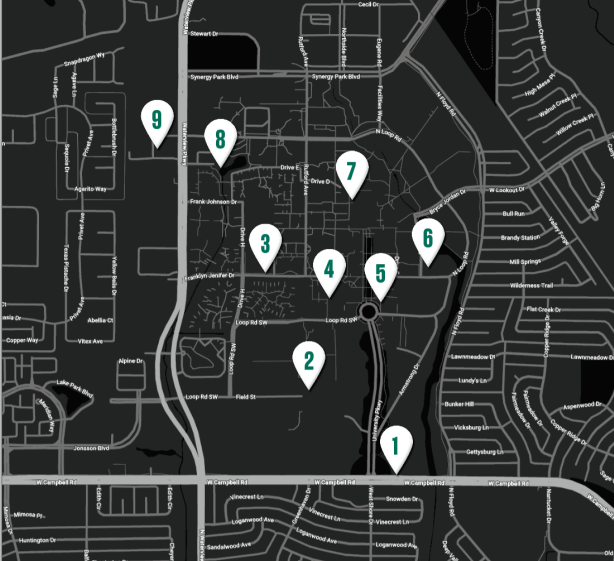
The COVID-19 virus ranges from 0.1 to 0.5 microns, and a small dust particle averages 2.5 microns. In comparison, a grain of salt is 60 microns.
“The smallest particles, such as viruses or combustion from a forest fire, do not have much mass, but they can have a disproportionately large impact on us because they penetrate so deeply into our lungs,” Lary said. “These particles can get into the bloodstream and into the brain, so it’s not just respiratory issues that are of concern, it’s our everyday cognitive performance.”
Lakitha Wijeratne MS’17, PhD’21, a research scientist in the MINTS lab, oversees the sensor construction. Over the last six years, he says 100 students have been involved in developing and analyzing the data being captured.
The students are mostly physics and electrical engineering students from UT Dallas, with additional support from students at Paul Quinn College and a few local high schools.
Physical location, exposure to sunlight and height of installation are all critical for the sensors’ power and functionality.
They work in a variety of ways, either through solar power, electricity or connection to a domestic grid. Intricate light sensors, capable of measuring 18 wavelengths, sit on top of the mechanism.
“Our light sensors are important for accuracy,” Lary added. “If you are under a tree or if a cloud rolls overhead, it impacts the air chemistry.”
The sensors do not require direct internet connection; they use a technology called LoRaWAN. “It is like Wi-Fi or Bluetooth, but it allows for a larger transmission range,” Wijeratne said. “The data is collected and sent to a gateway on top of the Natural Science and Engineering Research Laboratory on campus.”
The UT Dallas Office of Sustainability started collaborating with Lary in 2018 to deploy air quality sensors in targeted neighborhoods in Dallas and Plano. This initiative, called SharedAirDFW, is now widening its footprint with the UT Dallas installations, along with 10 sensors developed for the Dallas College network.
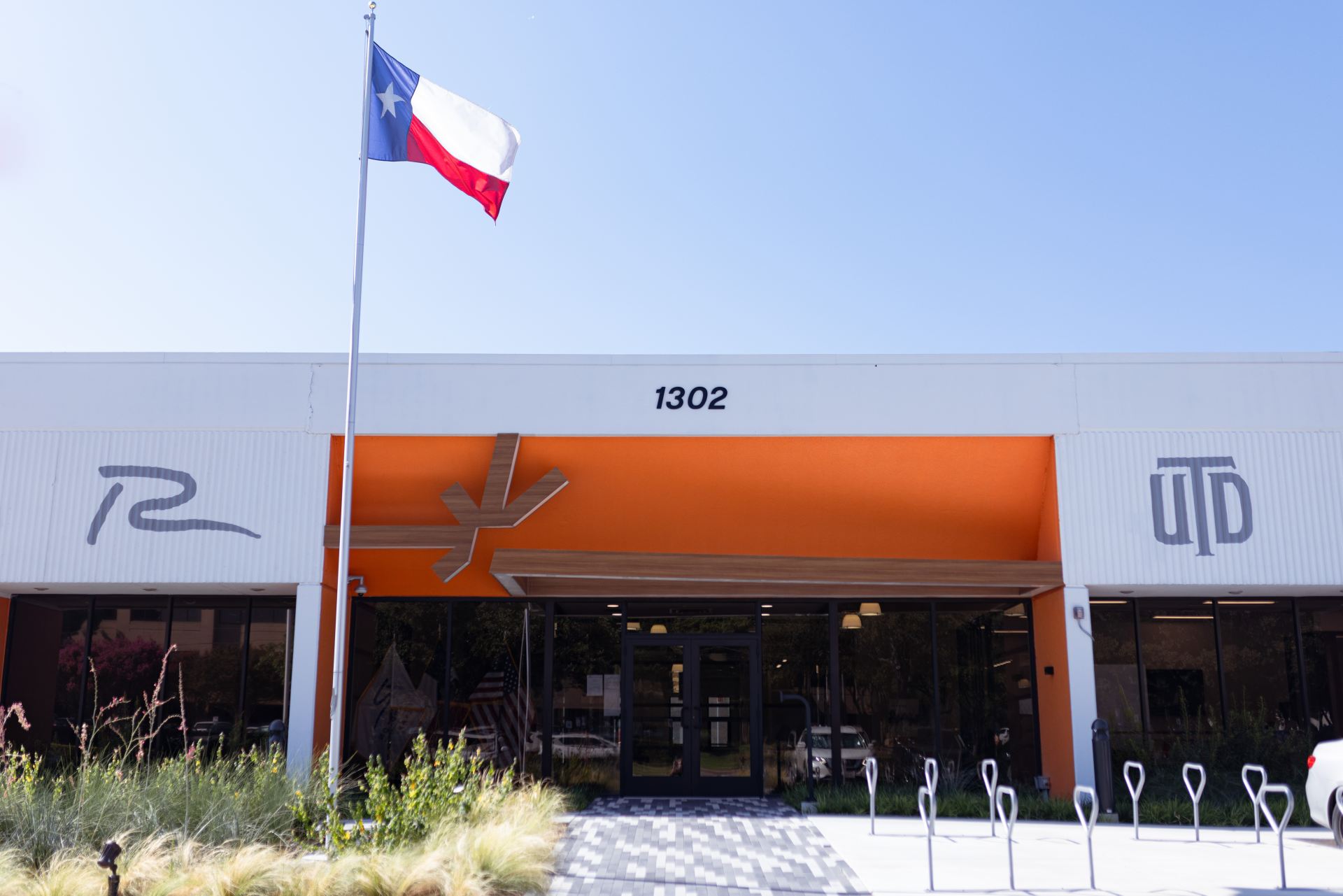
Gary Cocke, UT Dallas director of sustainability and energy conservation, says the sensors contribute to the “living, learning laboratory” environment on campus.
“Dr. Lary’s research is focused on creating societal benefit through science, which is completely aligned with the work performed in the Office of Sustainability,” Cocke said. “We have assisted through advocacy for expanding the sensors locally and on campus, and we hope that this can educate our community and also serve as an example for others as we hope to grow this first-of-its kind network.”
The MINTS office is housed in the Richardson Innovation Quarter, a partnership between The City of Richardson and the University. The 500-acre campus opened in February 2022 and is envisioned to be the premier tech hub in Texas.
Richardson IQ hosts six research centers and serves as an incubator space to support local entrepreneurship and to advance UT Dallas research. Out of the six, MINTS is the only center run by NSM faculty.
“Being in the IQ has allowed us to reach the wider community and meet more partners that share the same passion of serving society and advancing global technology,” Lary said. “We are all here to combat sustainability challenges together.”
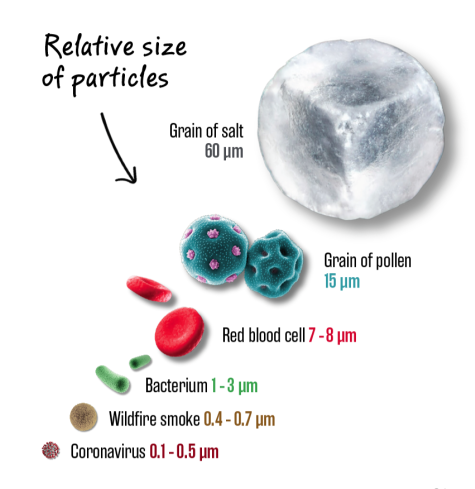
The air quality sensors on campus are just one part of a bigger picture, according to Lary. The MINTS team has produced a fleet of autonomous environmental robots comprised of aerial and walking robots, as well as robotic boats. These technologies enable sensors to enter hazardous or isolated areas, such as bodies of water.
These sensors are paired with artificial intelligence and machine learning to rapidly assess the environment, analyze information and produce wide-area data maps that can be streamed in real time. The robots are also equipped with a hyperspectral camera that measures 600 wavelengths simultaneously, versus a normal camera that measures just three, and can quickly map the chemical composition of a section of water.
This has wide implications for evaluating the biological threats after environmental disasters, such as oil spills or hurricanes.
“The robots are the ride,” said Lary, who previously worked for NASA’s Goddard Space Flight Center. “The sensors need a platform to carry them and give them power to provide the communication.”
But the sensors are not just for robots. Wijeratne is building wearable biometric sensors that could also have significant implications for emergency first responders and military personnel.
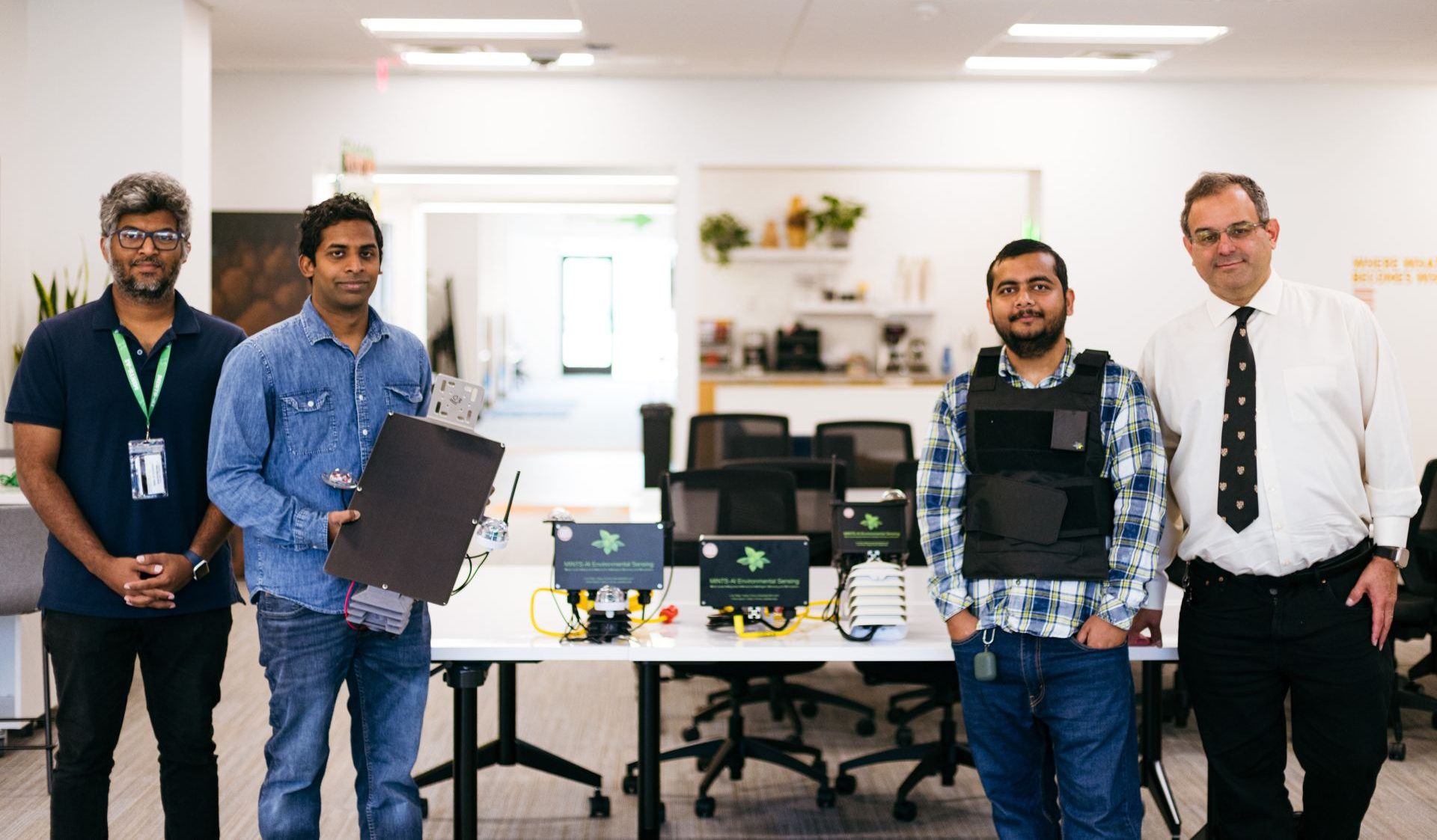
Lary is hoping the wearable sensos will soon be deployed for use with explosive ordnance disposal troops, which diffuse chemical, biological, radiological and nuclear devices. These specialists are exposed to high emissions levels. The sensors can be fastened to their vests during training to study air composition.
Lary likens the sensors to the canary once used by coal miners as a sentinel of danger. If there were toxins in the mine, the canary’s death would signal to the miners the air wasn’t safe. “Our mantra is: ‘No canary has to die,’” Lary said.
Lary is looking to expand MINTS technology beyond UT Dallas, outside the Dallas-Fort Worth Metroplex, and into everyday society. To do this, his team is currently working on a new project that could predict and prevent societal health issues related to poor air quality.
This endeavor combines data on physical environmental factors (weather, atmospheric composition, local flora and fauna) with a multitude of social parameters from the U.S. Census Bureau. The cross-disciplinary approach helps the researchers develop empirical models for different medical conditions, shedding light on the most influential factors in each case.
“What we’ve done is looked at pretty much every emergency room admission in the state of Texas for the last 20 years,” Lary said. “We can build models that link admission rate to certain health conditions; everything from sepsis, to asthma and unspecified schizophrenia.”
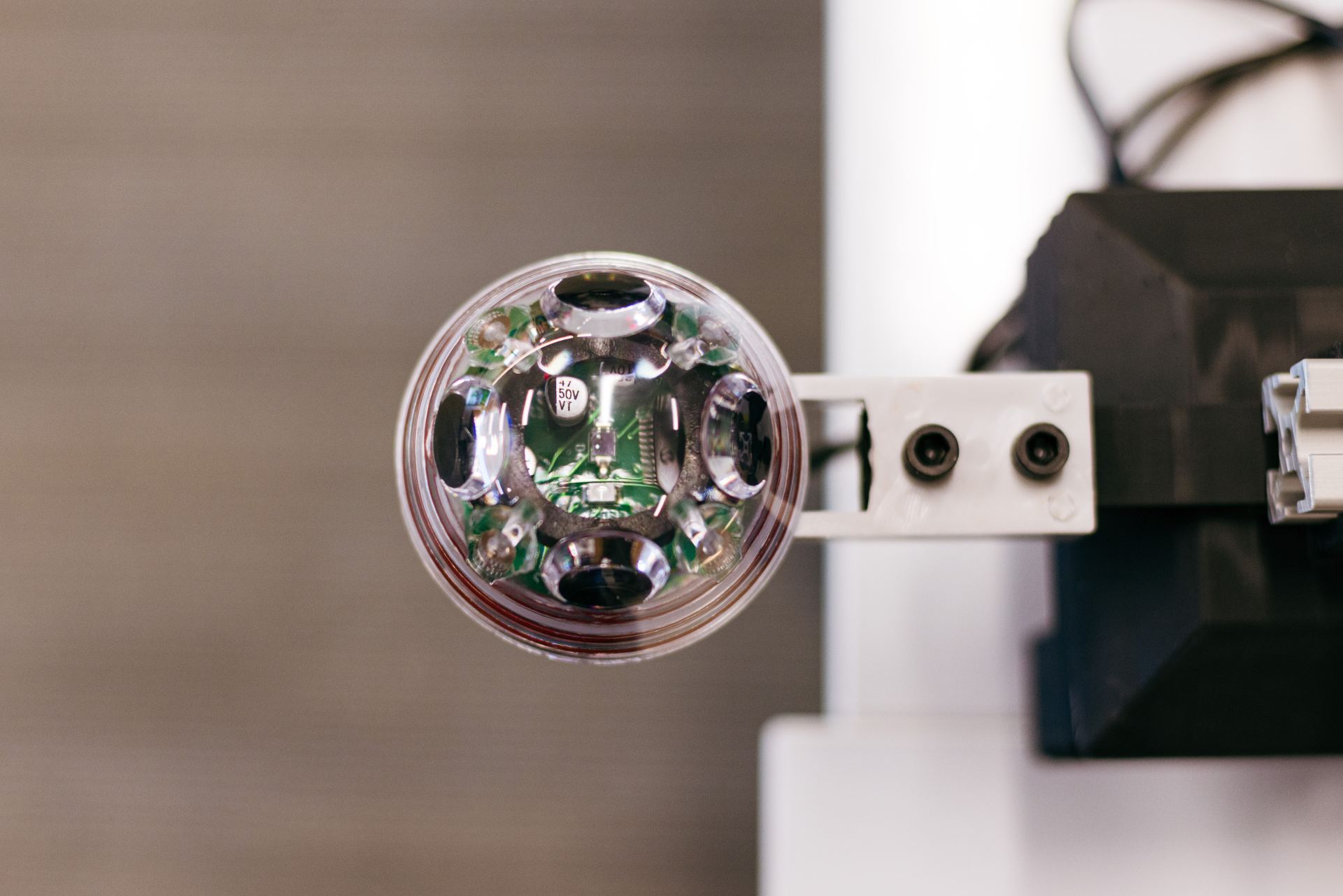
He envisions practical applications for this knowledge, including reducing wait times in emergency rooms by predicting likely admissions and optimizing resource allocation. Investing in preventative measures, such as improving indoor air quality, could lower urgent care costs for health insurance companies, he says.
All in all, MINTS is on a mission to give people agency and enable society to make informed decisions about seemingly harmless activities.
“For example, if a veteran with COPD (chronic obstructive pulmonary disease) needs to go grocery shopping, our wearable sensors can alert them if it’s too dangerous to leave the house,” Lary said. “That can be the difference between a normal day and a very bad day in the hospital.”
Cocke is hopeful that the sensor initiative on campus can inspire and support the need for extending the monitors further into the community, creating a more sustainable and healthy environment for North Texas and beyond.
“I hope that this project can educate our campus and our region about how important it is for everyone to be able to breathe clean air,” Cocke said. “It provides proof of concept that these sensors can obtain affordable and accurate data at a hyper-local level. Decision-makers will have actionable information in order to preserve air quality in the areas and communities that need it most.”
Help us leave the planet a better place for future generations. Your support for the School of Natural Sciences and Mathematics funds scientific discoveries with real-world applications, student and faculty recruitment, and academic scholarships.